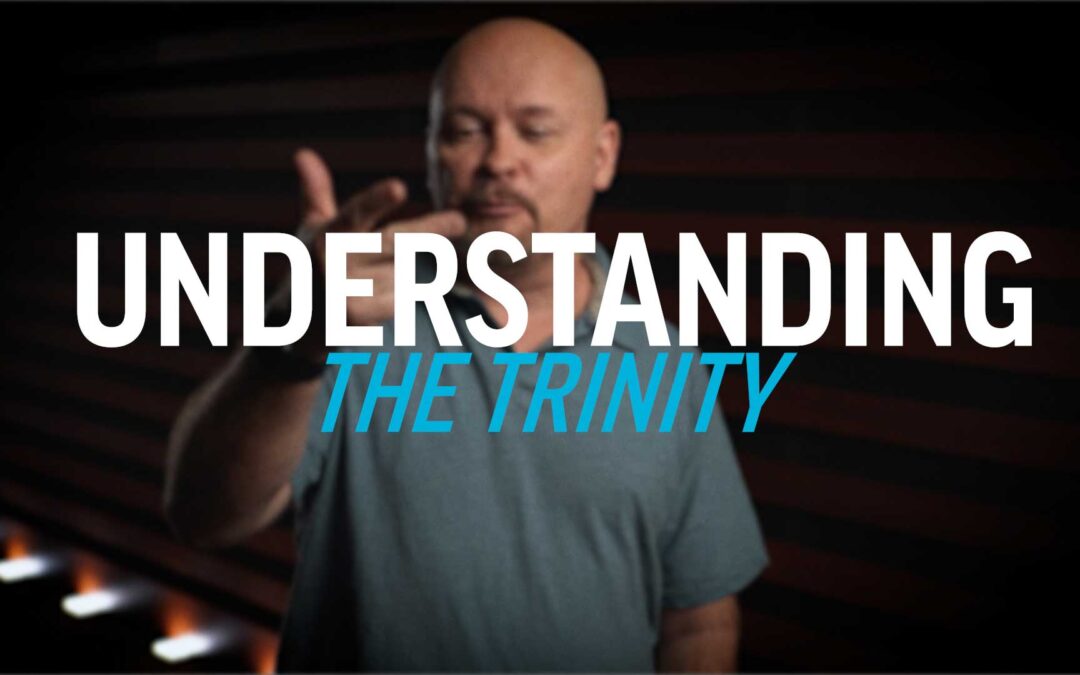Many people believe that Christians struggle with math due to the concept of the Trinity. The misconception is that Christians say, “We have the Father, Son, and Spirit – that’s one plus one plus one,” and then assert that equals one God. Detractors argue, “No, that’s three; you guys are bad at math.” So are we?
Hi, I’m Craig Smith, and I enjoy answering questions about theology, the Bible, Christianity and following Jesus. Today, let’s discuss the Trinity, one of the most intricate doctrines in the Christian faith. If you’re a follower of Jesus and find the Trinity confusing, don’t worry; you’re not alone. Understanding the Trinity is challenging because it’s closely tied to the infinite nature of God, something our finite minds struggle to comprehend.
Quantum Entanglements
To paraphrase the theologian St. Gregory the Great, “In the Bible, we find shallows where a mouse can wade and depths where an elephant can drown.” The Trinity can be compared to quantum physics – it can be observed, with some principles established, but not fully understood. Here’s what we know about the Trinity:
One God
The Bible consistently emphasizes one God from start to finish. This concept has also been the centerpiece of Jewish faith for thousands of years, and is codified in a daily prayer known as the Shema. The Shema comes from Deuteronomy 6:4-9, quoted here from the NIV:
“Hear, O Israel: The Lord our God, the Lord is one. Love the Lord your God with all your heart and with all your soul and with all your strength. These commandments that I give you today are to be on your hearts. Impress them on your children. Talk about them when you sit at home and when you walk along the road, when you lie down and when you get up. Tie them as symbols on your hands and bind them on your foreheads. Write them on the doorframes of your houses and on your gates.”
Jewish people pray that every single day for their whole lives – the notion of One God is deeply entrenched in their culture. As Bible-believing Christians, it directly translates into a model for our personal culture.
One Son
Jesus claimed to be the unique Son of God, a claim supported by his resurrection from the dead. Three days later, God raised him from the dead, a bold claim backed up by eyewitness testimony and historical record. Jesus is a second person who is different from the Father and also fully God.
One Spirit
Jesus also spoke of the Spirit of God, indicating three distinct persons. It is interesting that, at the same time that Jesus was talking about these three persons of God, the Son, the Father and Spirit, he never argued or disagreed with the idea that there is one God.
The Trinity
The Trinity framework involves three key elements:
-
-
- One God.
- Three persons (Father, Son, and Spirit), each fully God.
- Full unity among the three persons, always existing in perfect harmony.
-
It’s a little bit like a triangle – ancient Christians graphically represented it with the “Shield of the Trinity.”
There are three persons who are God. Each person is fully God and fully unified with each other. All three persons, Father, Son and Spirit, have always existed. They do everything in complete unity with each other. There’s love between those three persons and a unity of purpose that they are engaged in.
Bowling for Eternity
The Trinity can represent three barriers or bumpers, the kind you might use at a bowling alley. Using those bumpers keeps our ball right in the lane. We have three barriers that can keep our thinking inside the Trinity while still declaring one God. There are three persons who are God and all three persons are fully God and are fully unified with each other.
If you cross the barrier that says that there’s only one God, you end up endorsing polytheism – “the belief in or worship of more than one god.”
If one were to go over the barrier that says there are three persons who are also each fully God, then you wind up asserting that God is simply manifesting different aspects of himself as three different persons, similar to one person serving in different roles at work, in a marriage and with family. But that is not what the Bible shows us.
The Son actually exists as a distinct person, and he has always existed, interacting with the Father who also has always existed, and not one God showing up three different ways. Jesus also talked about the Spirit of God and sent the Spirit of God out on multiple occasions.
If you cross the barrier that says each person of the Trinity is fully God and fully unified, you end up saying that Jesus is a little bit less God than the Father, or that the Spirit is a little bit less God than the Son, which is also not supported by the Bible text.
Straying outside these parameters results in heresy, such as polytheism or distorting the equality of the three persons. Unfortunately, we see people making this mistake throughout the history of the church. While the Trinity remains challenging to fully explain, adhering to these biblical parameters helps maintain clarity.
Ultimate Love
One fascinating aspect of the Trinity is its reflection of God’s love. The Trinity shows that God is inherently relational and loving. The Father, Son, and Spirit, existing eternally, demonstrate a perfect, unified relationship. This reveals that God’s creation of humanity was not out of loneliness, but a desire to extend the love within the Trinity to us.
And it is very easy to discern the love in all three persons. God the Father loves us, so he sent his Son Jesus. The Son loves us, so he died for us. And the Holy Spirit loves us by crying out our affection to the Father. We find that in Paul’s writings, that the Spirit actually cries out with our spirits to the Father calling out Abba, which is a term of endearment and affection. The Spirit communicates God’s love to us and also stirs up our love for God.
The Trinity is a complex yet essential aspect of Christian doctrine, demonstrating the depth of God’s love through the unity and relationship within the Father, Son, and Spirit.
Have a question you’d like to ask Craig? Click the button below!
RELATED CONTENT

Our culture enthusiastically embraces the saying, “No pain, no gain,” a concept we appreciate until we find ourselves in pain, desperately seeking relief. However, not all pain is inherently bad; it hinges on one’s perspective.

Have more questions? Check out our Questions with Craig YouTube playlist where Pastor Craig answers tough questions about God, Christianity, the Bible, and more.
AUTHOR CREDITS
Craig Smith
Lead Pastor
GRAPHIC CREDITS
Zac Anderson
Video Production Specialist




